Tiny gems take big step toward battling cancer
Nanodiamond-drug combo significantly improves treatment of chemotherapy-resistant cancers.
Mar 9th, 2011
Read more
Nanodiamond-drug combo significantly improves treatment of chemotherapy-resistant cancers.
Mar 9th, 2011
Read more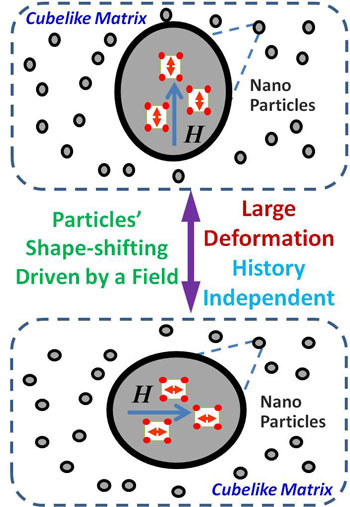 Springy nanostructured metals hold promise of making engines, medical equipment, security systems more efficient and effective.
Springy nanostructured metals hold promise of making engines, medical equipment, security systems more efficient and effective.
Mar 9th, 2011
Read moreTomorrow's nonvolatile memory devices - computer memory that can retain stored information even when not powered - will profoundly change electronics, and Cornell University researchers have discovered a new way of measuring and optimizing their performance.
Mar 9th, 2011
Read more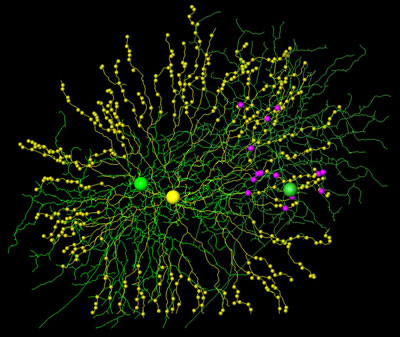 Using a novel microscopy method developed at the Institute, scientists from the Max Planck Institute for Medical Research in Heidelberg have now discovered that the distribution of the synapses between ganglion cells and interneurons follows highly specific rules. Only those dendrites that extend from the cell body of the amacrine cell in a direction opposite to the preferred direction of the ganglion cell connect with the ganglion cell.
Using a novel microscopy method developed at the Institute, scientists from the Max Planck Institute for Medical Research in Heidelberg have now discovered that the distribution of the synapses between ganglion cells and interneurons follows highly specific rules. Only those dendrites that extend from the cell body of the amacrine cell in a direction opposite to the preferred direction of the ganglion cell connect with the ganglion cell.
Mar 9th, 2011
Read moreIn a new study, scientists showed that in people with diabetes, breathing ultrafine particles can activate platelets, cells in the blood that normally reduce bleeding from a wound, but can contribute to cardiovascular disease.
Mar 9th, 2011
Read moreAnother step has been taken in matter imaging. By using very short flashes of light produced by a technology developed at the national infrastructure Advanced Laser Light Source (ALLS) located at INRS University, researchers have obtained groundbreaking information on the electronic structure of atoms and molecules by observing for the first time ever electronic correlations using the method of high harmonic generation.
Mar 9th, 2011
Read moreInstallation of fully-enabled 28nm technology provides state-of-the-art, industry-compatible R+D.
Mar 9th, 2011
Read more Alice A. Chen, a biomedical engineer and graduate student in the Harvard-MIT Division of Health Sciences and Technology (HST) and Harvard School of Engineering and Applied Sciences (SEAS), today received the prestigious $30,000 Lemelson-MIT Student Prize for her innovative applications of microtechnology to study human health and disease.
Alice A. Chen, a biomedical engineer and graduate student in the Harvard-MIT Division of Health Sciences and Technology (HST) and Harvard School of Engineering and Applied Sciences (SEAS), today received the prestigious $30,000 Lemelson-MIT Student Prize for her innovative applications of microtechnology to study human health and disease.
Mar 9th, 2011
Read moreNAPEN 2011 will focus on the development of novel nanoporous materials and the establishment of cost effective energy and environmental applications.
Mar 9th, 2011
Read more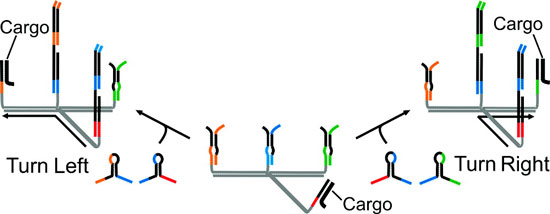 Scientists have developed a programmable 'molecular robot' - a sub-microscopic molecular machine made of synthetic DNA that moves between track locations separated by 6nm.
Scientists have developed a programmable 'molecular robot' - a sub-microscopic molecular machine made of synthetic DNA that moves between track locations separated by 6nm.
Mar 9th, 2011
Read moreThe ICPC Nanonet Project is currently accepting registrations for the next webinar event, a "Latin American Biomedical Nanotechnology Showcase", which takes place on 23 March 2011, at 13.30-16.00 GMT.
Mar 9th, 2011
Read more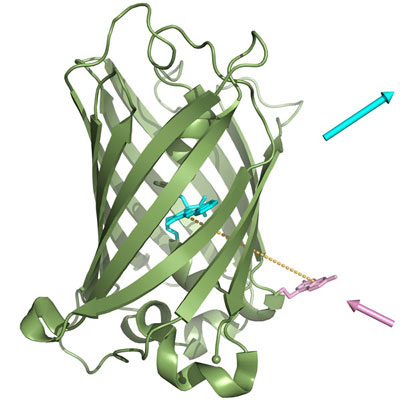 Since the middle of the 1990s a bright green fluorescent protein has been used in research laboratories worldwide. Protein designers at Technische Universitaet Muenchen (TUM) in Weihenstephan have now taken the existing fluorescent protein a step further: They have managed to incorporate a synthetic amino acid into the natural protein and thus to create a new kind of chimeric fluorescent bio-molecule by means of synthetic biology. By exploiting a special physical effect, the fluorescent protein glows in turquoise when excited with ultraviolet light and displays up to now unmatched properties.
Since the middle of the 1990s a bright green fluorescent protein has been used in research laboratories worldwide. Protein designers at Technische Universitaet Muenchen (TUM) in Weihenstephan have now taken the existing fluorescent protein a step further: They have managed to incorporate a synthetic amino acid into the natural protein and thus to create a new kind of chimeric fluorescent bio-molecule by means of synthetic biology. By exploiting a special physical effect, the fluorescent protein glows in turquoise when excited with ultraviolet light and displays up to now unmatched properties.
Mar 9th, 2011
Read moreThe aim of this European funded Project called NanoDiaRA is to develop new nanotechnology to address major unmet clinical needs relating to the early detection and treatment of arthritic diseases like rheumatoid arthritis and osteoarthritis.
Mar 9th, 2011
Read more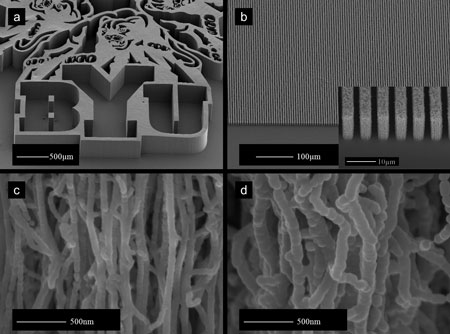 A Brigham Young University physics student and his professor had some fun with their new method of growing tiny machines from carbon molecules.
A Brigham Young University physics student and his professor had some fun with their new method of growing tiny machines from carbon molecules.
Mar 9th, 2011
Read moreScientists at AIST in Japan have produced high-purity carbon nanotubes (CNTs) with a random network structure by applying the super growth technique. This CNT structure exhibits rubber-like viscoelasticity in a temperature range of -196 to 1000 C.
Mar 9th, 2011
Read moreA new architecture for quantum computation has emerged, according to a study published in Nature. Partial support for this study came from the EU-funded projects MICROTRAP (' Development of a pan-European Microtrap Technology capability for Trapped Ion Quantum Information Science') and SCALA ('Scalable quantum computing with light and atoms').
Mar 9th, 2011
Read more